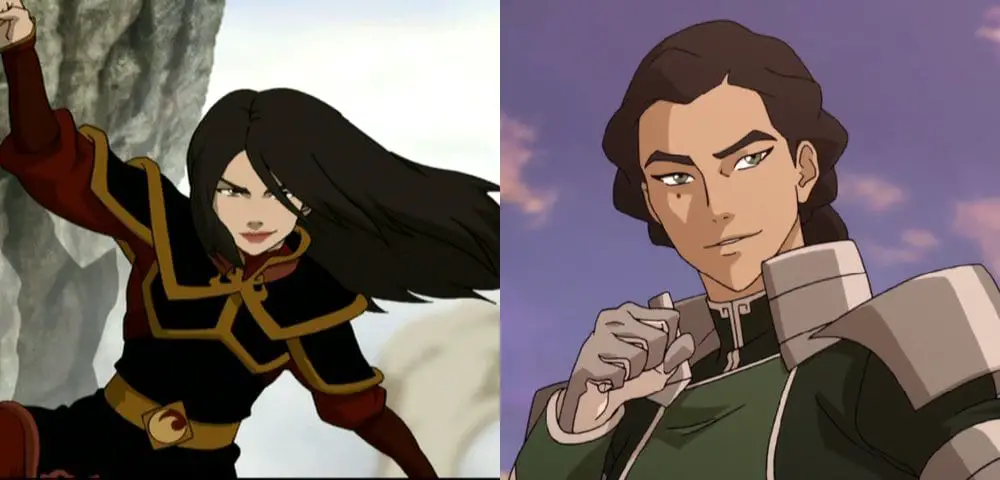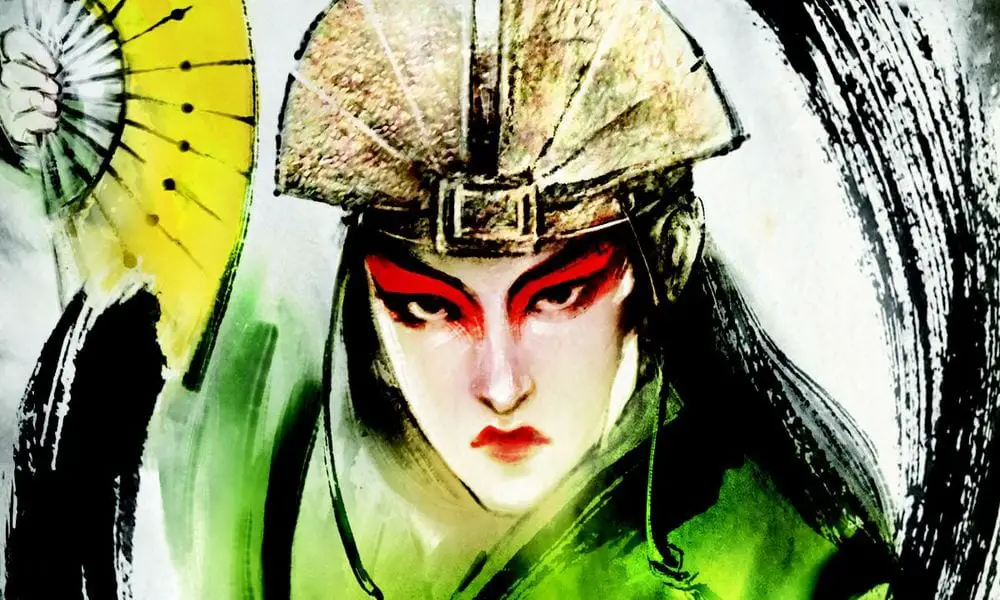Just as Korra struggled with the legacy of Aang, so too did The Legend of Korra sometimes live in the shadow of its predecessor, Avatar: The Last Airbender. But while we take the stance that The Legend of Korra is great enough on its own merits, we do love us some comparison. Take a look at some of our past articles that look at both shows, place Korra in the broader Avatar franchise, and even do the impossible: heal a fight within the fandom.
Leather Pants & Who Wore Them Better: Azula vs. Kuvira

In a piece from 2016, Kylie examines two characters that the fandom loves to make excuses for: Princess Azula and Kuvira. Laying out both the good and the bad, it’s up to you which villain wears the “leather pants” better.
“Now, the point of this article is not at all to shame anybody for stanning either of these characters, nor for rationalizing away some of their more unsavory behavior. There was actually a time where Azula was dangerously close to becoming leather pantsed in my analyses when I was attempting to figure out why she was also the target of incredibly misogynistic attack posts on the other side, until I received a moving, thoughtful piece that helped re-center my lens. I do know all about that razor’s edge between understanding motivations and excusing actions better than I like to admit.”
The Surprising Similarities Between Kyoshi and Kuvira

In another comparison piece (also about Kuvira, man she’s fun), Bo puts her up next to the fearsome Avatar Kyoshi. Now that we’ve read more about her in the Rise of Kyoshi novels, the two share more in common than you might expect.
“Both characters struggle deeply with the insecurities of finding family due to their abandonment. Kyoshi spends an unspecified amount of time homeless, persecuted, and suffering before an airbending master named Kelsang, companion of the deceased Avatar Kuruk, gives her a home with the misidentified Avatar named Yun. When Kyoshi realizes she may be the Avatar, she desperately does not want to believe it. Kelsang, Yun, and her firebender friend Rangi have become her family and she desperately does not want to lose them. Nothing means more to Kyoshi. It is the loss of this family that sends her on the path of revenge”
Avatar, Spirits, and Spirituality
![]()
“Spirits are, in general, the more outwardly “magical” element of the world in Avatar: The Last Airbender. Bending is by design rather predictable and we generally know what works and what doesn’t by the time we’ve seen half of the first season. Spirits introduce stranger and more fantastical things with them when they appear, but they’re not particularly central.”
Avatar vs. Korra: We Don’t Have to Choose
![]()
When Avatar: The Last Airbender debuted on Netflix, we were inundated with hot take after hot take describing how “bad” Legend of Korra was compared to its predecessor. In this piece, Szofi examines why there’s an inferiority complex and a healthier way of approaching our favorite shows.
“There’s a dissonance here. It’s almost as if fans feel like the shortcomings of LoK are a personal offense. As if anything that Korra might have done invalidates A:TLA. Personally, I refuse to believe that all of this comes from hate; I think a good chunk of it comes from a place of love. I think A:TLA was such a deeply moving story to so many that it feels like a betrayal when Korra is… different. And this is the point, this is what could easily put a stop animosity, the realization that the two series are different and that’s okay.”
The Case For Korra

In another response to the bizarre anti-Korra parts of the fandom, Bo finds points of connection between Legend of Korra and its predecessor in order to examine the direct line between the two shows. And point out some of the fandom’s hypocrisy.
“Think about it. A stubborn, prideful, angry, sometimes mean person who is confrontational towards their older mentor and makes bad decisions out of their eagerness to prove themselves? How does this not sound exactly like Zuko? There are noticeably clear similarities between Korra and Zuko that make me wonder why one character is so universally loved and the other is divisive.”
5 Ways The Legend Of Korra Improved On Avatar: The Last Airbender…And 5 Ways It Didn’t
![]()
In the final part of our trilogy trying to heal the newly formed wound in the fandom, Dan finds some places where The Legend of Korra failed to live up to it’s prequel series…and where it surpassed it.
“The Legend of Korra fandom has argued about villains since Amon first showed up on screen back in Book One, and they’ve not stopped since. Unlike the more traditional villainy of Ozai, who was the big evil monster with no heart or soul, the foes Korra faced down were as complex as she was. All of them had something about them that made the viewer feel sympathy, whether it be Amon’s call for bender/non-bender equality or Kuvira’s closeness with the Beifong clan and belief in the Earth Kingdom. None of them, not even Unalaq, were ever as bombastically evil as Ozai, but they made up for it by personally torturing Korra, especially Zaheer and the Red Lotus. They also mapped easily onto real-world politics: Amon’s version of Socialism, Unalaq’s religious theocracy, Zaheer’s anarchy, and Kubira’s militaristic fascism; all are much more easily seen in the real world than Ozai’s power-hungry megalomania. Korra’s defeat of them felt like proxy for defeating the political evils the audience was dealing with, and it added a new layer of depth to the show that the previous one lacked.”
Images via Nickelodeon

